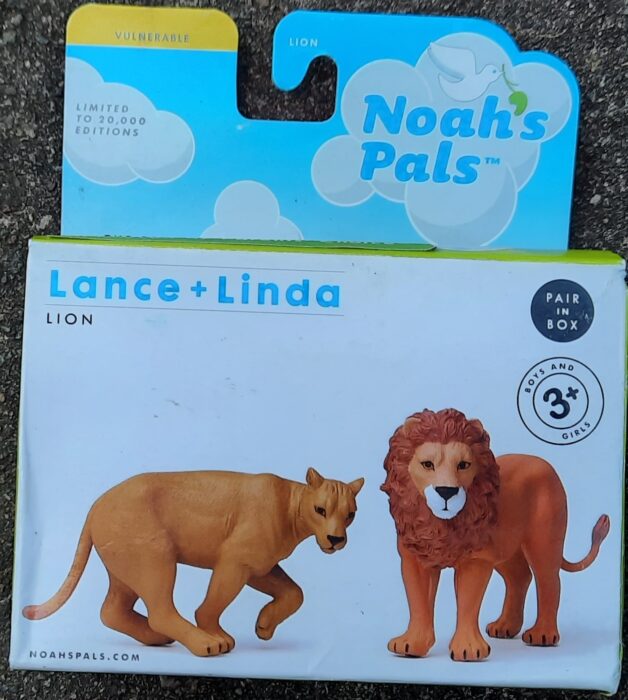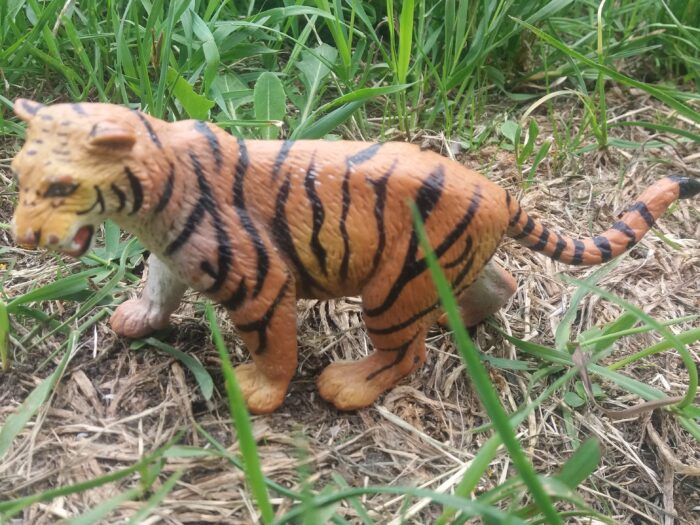Welcome back to the “Savannah Summer”! Hot weather often makes people want to find a nice, shady spot and just relax, do more later as the temperature dips. This method is also used by the largest mammal predator in Africa, the lion (Panthera leo). Like any cat, they are masters of lazing around, as well as hunting.
All Panthera Reviews
Tiger, Male Lying (AAA)
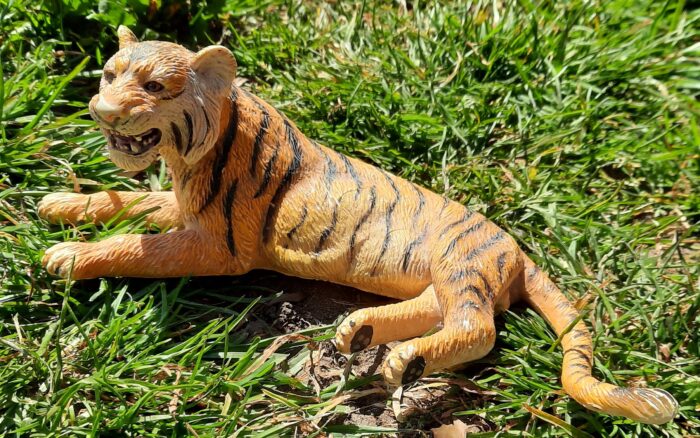
When most think of big cats, they probably picture these powerful carnivores majestically tracking their prey in the undergrowth, or roaring to ward off other predators. At the end of the day though, they are still cats, and there is one thing that makes them very good at: sleeping. The mighty tiger (Panthera tigris) is no exception, happy to lounge around when not hunting.
Tiger, pair (Noah’s Pals by Caboodle! Toys LLC)

“Tyger, Tyger, burning bright,
In the forest of the night,
What immortal hand or eye
Can frame thy fearful symmetry?” The Tyger, William Blake, 1794
This poem, used in the Songs of Experience by William Blake, was a counterpoint of the Songs of Innocence poem, The Lamb, and you can see why.
Snow Leopard, youngster (AAA)

Continuing the “Winter Wonderland” series, we are going into the highest elevations of the world, as we look at a figure of one of the rarest cats in the world, the snow leopard (Panthera uncia). These beautiful cats are found across the mountainous regions of central and south Asia, hunting across the Tibetan Plateau and Siberia.
White Tigress Roaring (AAA)
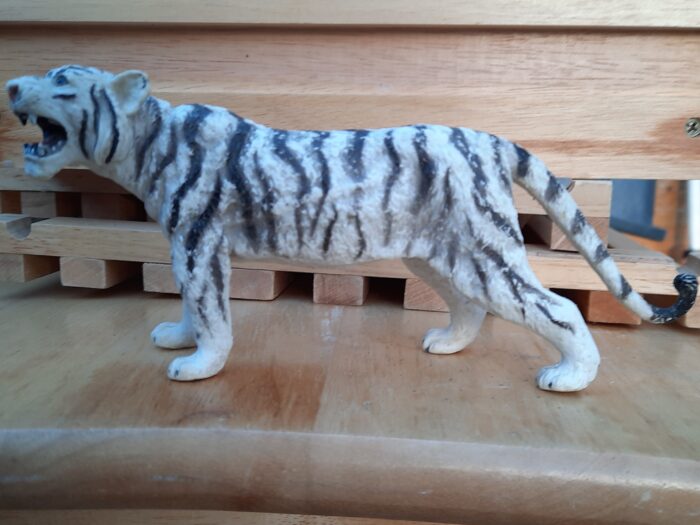
Among the modern cats, none are bigger than the tiger, and famous among these is the Bengal tiger (Panthera tigris tigris). The stripes on each being an individuals’ fingerprint, and the orange hiding it in the forests of India. But every so often, one is born heavier and larger than others, as well as lacks the vibrant orange, but instead a bright white.
African Lioness, with cub (Wild Animals by Papo)
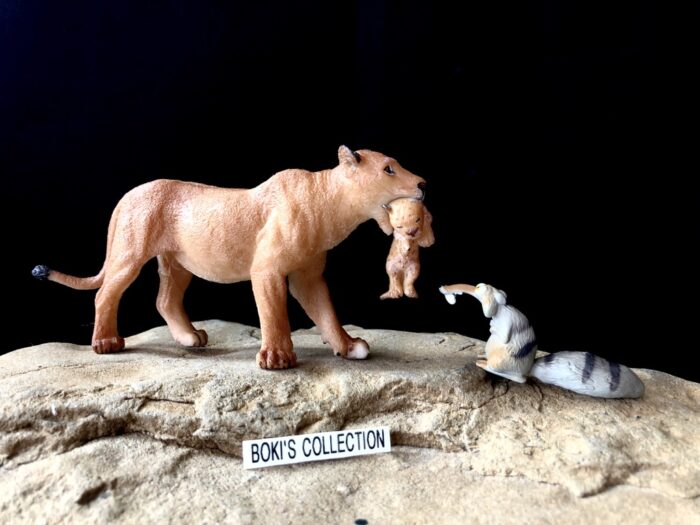
No other extant animal captures the essence of the wild like the lion. It is without a doubt the most famous of the big cats and often referred to as “King of the Beasts”, “Lord of the Jungle” and so on.
The lion’s great strength and the male’s impressive appearance have made them popular and a staple of pop culture and the toy figure industry.
Tiger, 1996 (Wild Safari Wildlife by Safari Ltd.)
African Leopard, 2007 (Wild Life by Schleich)
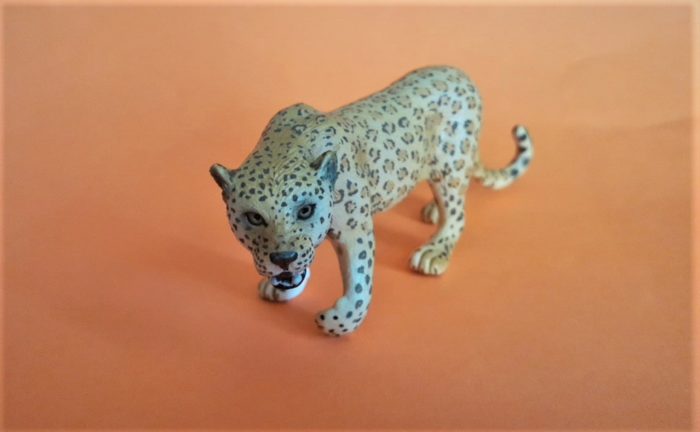
Review and images by spacelab; edited by bmathison1972
The Leopard. One of the most iconic wild-life animals and without a doubt one of the prettiest predators in the world. A wild cat with beautiful body structure, power and flexibility, that became a cult symbol, having also enormous presence in the pop/rock culture, especially in the 70’s.
Siberian Tiger, 2015 (Wildlife by CollectA)

Review and photographs by Suspsy; edited by bmathison1972
The tiger (Panthera tigris), with its magnificent orange coat and dark stripes, is the largest living cat, even larger the lion. And it is just as famous and revered in human society as its kingly relative, from its honoured status in Asian myth and art to memorable characters such as Shere Khan from The Jungle Book, Tigger from Winnie the Pooh, Hobbes from Calvin and Hobbes, Richard Parker from Life of Pi, and Tony the Tiger, mascot for Frosted Flakes cereal.
African Lion, 2017 (Wildlife by CollectA)
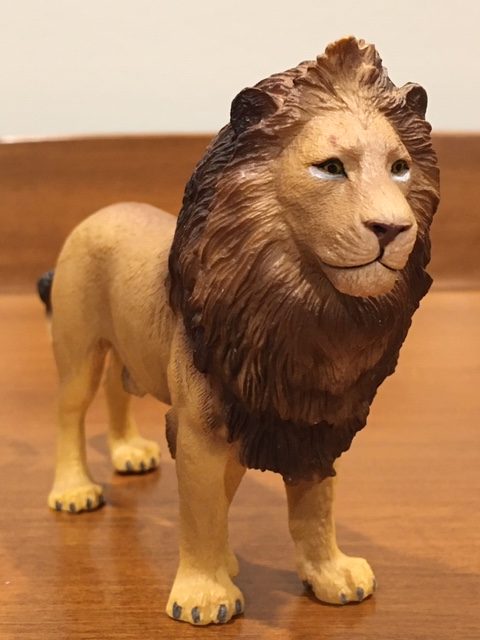
Review and photographs by Suspsy; edited by bmathison1972
The African lion (Panthera leo) is the modern day equivalent of Tyrannosaurus rex: a huge land carnivore whose raw power and undeniable charisma has led it to be dubbed “king of the beasts.” And from the Egyptian goddess Sekhmet to the biblical tale of Daniel to Richard the Lionheart to Aslan from The Chronicles of Narnia to the Cowardly Lion from The Wizard of Oz to Leo the MGM Studios mascot and to The Lion King franchise, its status as a cultural icon is absolutely incontrovertible.
Jaguar (Wild Life by Schleich)

Review and photographs by Suspsy; edited by bmathison1972
In Africa, the top land predator is the iconic lion. In Asia, it is the royal tiger. And in Central and South America, the tenacious jaguar (Panthera onca) reigns supreme at the top of the food chain.
Schleich’s most recent take on the jaguar came out in 2017.

